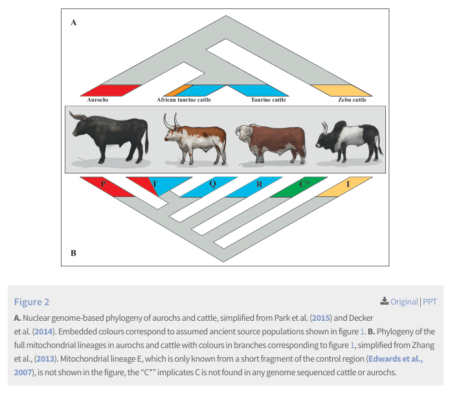A paper just out in Open Quaternary discusses “The Draft Genome of Extinct European Aurochs and its Implications for De-Extinction.” Not to boast about it, but we were onto that five years back.

Agricultural Biodiversity Weblog
Agrobiodiversity is crops, livestock, foodways, microbes, pollinators, wild relatives …
A paper just out in Open Quaternary discusses “The Draft Genome of Extinct European Aurochs and its Implications for De-Extinction.” Not to boast about it, but we were onto that five years back.
